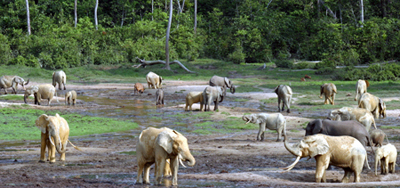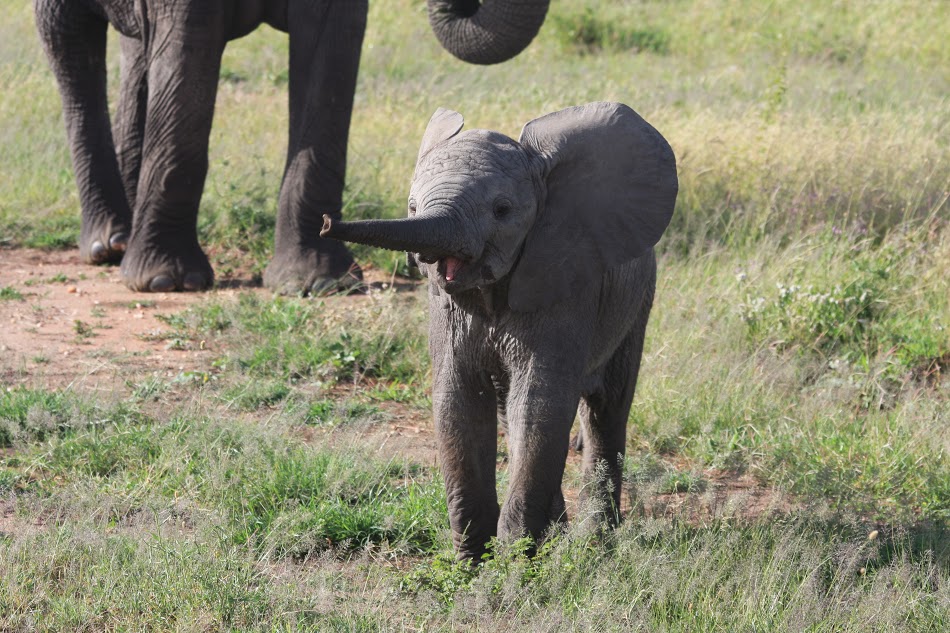African Elephant Conservation Fund 2015 |
|
| Total Number of Grants Awarded | 17 |
| Total Funds Distributed Through Grants | $1,798,623 |
| Total Partner Contributions Leveraged by Grants | $3,087,300 |
| Total Number of Countries that Received Program Support | 13 |
African elephants once numbered in the millions throughout Africa, but by 1990, uncontrolled hunting for their ivory tusks had driven the number of African elephants in the wild to fewer than 500,000 individuals. With a ban on international ivory sales and trade that went into effect in 1990 through the Convention on International Trade in Endangered Species of Wild Fauna and Flora (CITES) and increased investment in protection and anti-poaching, African elephants began to recover in some countries. However, a recent resurgence of illegal poaching of elephants in Africa, primarily for their ivory but also for meat and in retaliation for human-elephant conflict, is resulting in the serious decline of both forest and savanna elephant populations, and threatening the survival of the species. Even in some of Africa’s premiere parks, once thought to be safe havens, elephants are now under attack. Between 2011 and 2014, African elephant poaching levels reached the highest level recorded since international monitors began keeping detailed records in 2002. Across Africa, an estimated 100,000 elephants were killed for their ivory between 2010 and 2012, and the continent-wide estimate for all elephants has now been revised downward to 420,000.
In addition to the direct threat caused by poaching, the natural habitat of African elephants is shrinking as human populations grow and forests and savannas are cleared for infrastructure development, agriculture, and extractive industries such as logging and mining. Loss and degradation of habitat leaves elephants with a very limited food supply, which results in high levels of human-elephant conflict and retaliatory killings when hungry elephants enter villages and destroy local farmers’ crops.

Credit: Andrea Turkalo
The forests of Central Africa have been particularly hard hit. The total population of forest elephants declined by 62% between 2002 and 2011. Researchers estimate that forest elephants have disappeared entirely from 30% of the area they occupied a decade earlier. These declines have been particularly devastating in the Democratic Republic of the Congo, where warfare, the proliferation of weapons, and trading in ivory to fuel rebel factions have resulted in the loss of 80% of elephants (80,000 elephants) since 1970.
West Africa has lost most of its elephants, with few populations exceeding 100 animals. The northernmost Mali desert elephants are at serious risk because of scarce resources, warfare, and rampant poaching in the absence of effective wildlife law enforcement. Local staff and residents had made significant progress to protect the elephants and their water sites but this security has been undermined by recent instability.

Credit: Michelle Gadd/USFWS
The future of elephants in East Africa is also far from certain. As recently as 2008, Tanzania was home to the second largest population of elephants in Africa, with an estimated 110,000-165,000 individuals according to the International Union for the Conservation of Nature (IUCN) African Elephant Species Specialist Group’s African Elephant Database. However, by Tanzania’s own estimate, the country has lost 60% of its elephants in the past five years, dropping to a national total of 43,330. Its most significant population (in the Selous-Mikumi ecosystem) dropped from 70,000 in 2006 to 40,000 by 2009, and to a shocking 13,084 elephants in 2013 – a 66% loss in just three years. The next two largest populations also experienced catastrophic declines between 2009 and 2014, Ruaha-Rungwa dropped from 30,000 to 8,000 and Mulagarasi-Moyowosi-Kigosi declined from 15,000 to 3,000.
Since the early 1980s, Southern Africa has been the main stronghold and safe haven for elephant populations. Through immigration and natural population growth, Africa’s largest elephant population, in northern Botswana, grew steadily from 80,000 in 1996 to 129,000 in 2014. But in recent years, Botswana has also been targeted by poachers, with regular reports of poached carcasses being found in Chobe and Moremi National Parks and surrounding areas. As recently as the 1990s, Zimbabwe was home to the third largest population of elephants in Africa, with 80,000-100,000 individuals. However, elephant security in the country is now in question after a decade of political upheaval and inadequate investment in wildlife protection, Zimbabwe’s elephant population is feared to have suffered significant poaching. We await the official results of 2014 surveys.
Through the African Elephant Conservation Fund, the U.S. Fish and Wildlife Service supports the 37 African elephant range states with financial support for essential protection activities, especially anti-poaching. For more information on current projects, please see our most recent project summaries.

Credit: Michelle Gadd/USFWS

